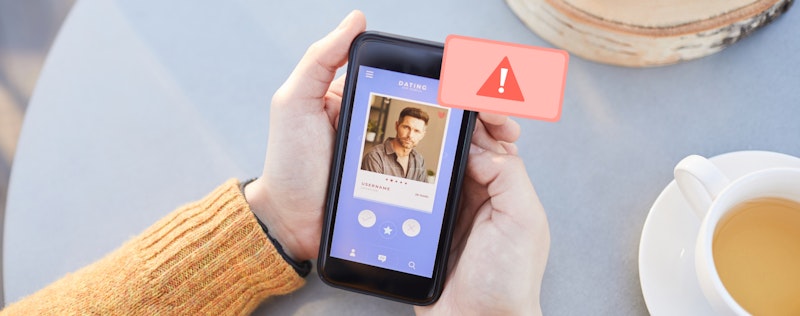
Truecaller Insights Reveal: Estimated 24.9M Americans Lost $8.9B in Phone Scams as Rate of Spam Calls Jumps 22%
Kim Fai Kok
Apr 26, 20186 min read
A new consumer poll on phone scam and spam show spam calls up 22% and 1 in every 10 adults in the U.S. was victimized by a phone scam in the past 12 months, with an average loss of 57 per victim.
Truecaller announced findings today from its fourth annual study on the impact of phone scams and spam in the U.S. Online research was conducted by The Harris Poll on behalf of Truecaller in March 2018 among U.S. adults age 18+.
According to the new study, 1 in every 10 American adults (10%) lost money from a phone scam in the past 12 months with nearly half (46%) of those who have ever been scammed reporting they’ve been a victim more than once. With an average loss of 57 per victim, the result of these scams is projected to have cost 24.9 million Americans approximately .9 billion* in total losses.
Total Spam Calls Up 22% Over Last 12 Months:On average, Americans reported receiving 23 spam calls (mobile and/or landline) and 8.5 spam text messages in an average month, which is a significant uptick from last year. Over a 12-month period, that amounts to roughly 68.9 billion spam-related calls and more than 25.4 billion spam texts received in the US.**
Note: The previous year’s report showed an average of 18.8 spam calls and 8.4 spam texts per month.
Males Aged 18-34 Most Susceptible to Scams:
Despite reporting a low average number of spam calls received per month (14.2), males aged 18-34 also reported a high instance of lost money with nearly a quarter (24%) claiming they’d been victimized by a phone scam in the past 12 months. Overall men (11%) reported being victimized slightly more than women (8%).
College Grads Twice as Likely to Fall Victim to a Scam:
According to the survey college graduates (14%) fell victim to phone scams in the past 12 months at a significantly higher rate than those with some college education (8%) or no college education (7%).
Parents with Children Under 18 Years Old More Likely to be Scammed:Parents with a child under the age of 18 years old reported a much higher instance of being phone scammed at 22% while just 5% of adults without a child under 18 reported losing money on a scam in the past 12 months.
Households with Total Income Above 0K and Less Than 5K Least Likely to be Scammed:Americans in households with a total income between 0K and 5K annually reported the fewest incidences of phone scams at just 5% versus households with incomes of 5K or more or those making less than 0K, which were scammed 10% and 12% respectively.
Scammers Target Mobile Phones:
Among those reporting phone scams in the past 12 months, 77% say it took place via mobile phone while just 29% say it occurred over a landline. Some reported receiving scam calls on both mobile and landline.
Note: The previous year’s report showed that 72% of the scam calls took place on mobile phones, and 26% claimed it occurred on their home phone/landline.
“Free Vacation” is Most Commonly Received Phone Spam:
Among the types of spams reported, a caller telling the recipient they’ve been selected for a free vacation and need to verify your credit card information was the most highly-occurring at 58% from those reporting to have received scam calls in the past 12 months.
Others include:
- Credit Card Debt – Caller claims they can help recipient pay off their credit card debt faster (51%)
- IRS – Caller claiming recipient of call owes taxes or penalties asking for credit card information or wire transfer (35%)
- Loans – Caller threatens that loans are past due or offers to help lower interest rates (33%)
- Political – Caller claims recipient has received a government grant or asks for money to support a political campaign (29%)
- Bank Problems – Caller claims to be from recipient’s bank and that a hold has been placed on their account and sensitive information is needed (18%)
- Nigerian Prince – Caller claims to be a prince and if recipient helps them access money they will reward them with financial compensation later (10%)
96% of People Who Lost Money Reported Taking Some Action:
As a result of being scammed, an overwhelming majority (96%) of those victimized said they took some action as a result.
Among those who lost money on phone scams in the past 12 months:
- 40% downloaded a spam blocker or caller ID app
- 38% canceled credit card or changed account numbers
- 31% signed up for credit protection/monitoring
- 29% checked phone bill
- 26% contacted phone carrier
- 23% reported it to authorities (police, FCC, FTC)
- 23% used “reverse look-up” or searched phone number to try and identify caller
- 22% signed up for Do Not Call Registry
- 17% changed phone number
- 4% did nothing
The survey also detailed how people react to calls from numbers they don’t recognize. Worth noting that nearly three-quarters of Americans (72%) say they now completely ignore calls (up from 67% last year) from unknown numbers while 40% either block or report the number (up from 36% last year).
Here’s the complete breakdown for each action taken for an unknown number:
Unknown calls
- Ignore completely (72%)
- Attempt to block or report the number (40%)
- Try to track down the source of number (29%)
- Answer and hang up immediately to stop the phone from ringing (23%)
- Use call-back feature (11%)
- Answer or respond right away (10%)
- Respond later (8%)
- Other action (5%)
- Not sure (6%)
Unknown text messages:
- Delete text (65%)
- Ignore completely (62%)
- Attempt to block or report the number (31%)
- Try to track down the source of the number (17%)
- Respond later (7%)
- Use “call back” feature (6%)
- Answer or respond right away (6%)
- Other action (4%)
- Not sure (8%)
Survey Methodology:
The 2018 phone scam survey was conducted online within the United States by The Harris Poll on behalf of Truecaller from March 13-15, 2018 among 2,036 U.S. adults ages 18 and older. The 2018 phone spam survey was conducted online within the United States by The Harris Poll on behalf of Truecaller from March 22-26, 2018 among 2,049 U.S. adults ages 18 and older. The 2017 phone spam survey was conducted online within the United States by The Harris Poll on behalf of Truecaller from March 13-15, 2017 among 2,145 U.S. adults ages 18 and older. The 2017 phone scam survey was conducted online within the United States by The Harris Poll on behalf of Truecaller from March 7-9, 2017 among 2,133 U.S. adults ages 18 and older. This online survey is not based on a probability sample and therefore no estimate of theoretical sampling error can be calculated.
For complete survey methodology, including weighting variables and subgroup sample sizes, please contact press@truecaller.com
Truecaller Insights US Spam & Scam 2017 report with full methodology can be found here: https://blog.truecaller.com/2017/04/19/truecaller-us-spam-report-2017/
About The Harris Poll
The Harris Poll is one of the longest-running surveys in the U.S. tracking public opinion, motivations and social sentiment since 1963 that is now part of Harris Insights & Analytics, a global consulting and market research firm. We strive to reveal the authentic values of modern society to inspire leaders to create a better tomorrow. We work with clients in three primary areas; building twenty-first-century corporate reputation, crafting brand strategy and performance tracking, and earning organic media through public relations research. Our mission is to provide insights and advisory to help leaders make the best decisions possible. Learn more at www.theharrispoll.com.
*2016 U.S. Census data showed a U.S. adult population (ages 18 and older) of 249,485,228. Based on 10 percent of U.S. adults reporting losing money in a phone scam, the total number of phone scam victims in the U.S. was estimated to be 24.9 million. The average phone scam victim in the survey reported losing 57. This equates to a total of .9 billion.
**The average American adults receives 23.0 spam calls in a month, when multiplied by the U.S. adult population (249,485,228) that equals an average of 5,738,160,244 spam calls per month. Multiply this monthly figure by 12 months and this equals an average of 68,857,922,928 spam calls per year. The average American adult receives 8.5 spam texts in a month, when multiplied by the U.S. adult population (249,485,228) that equals an average of 2,120,624,438 spam texts. Multiply this monthly figure by 12 months and this equals an average of 25,447,493,256 spam texts per year.

Kim Fai Kok
Apr 26, 20186 min read


